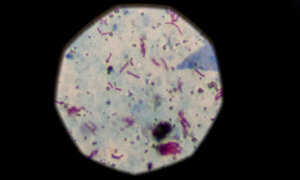A new report from the U.S. Centers for Disease Control and Prevention (CDC) highlights significant disparities in oral health among children and adults, particularly among vulnerable groups.
More than one in five U.S. adults suffer from untreated tooth decay, with poverty tripling the risk among children, according to the report.
Key Findings
Using data from the National Health and Nutrition Examination Survey (NHANES), a comprehensive survey designed to assess the health and nutritional status of adults and children in the United States spanning from 2017 to March 2020, the CDC found that untreated tooth decay is prevalent, with notable differences based on race, income, and education levels. The following were key findings:
- Nearly 21 percent of adults aged 20 to 64 had untreated tooth decay.
- 18 percent of children from high-poverty families had untreated decay compared with 6.6 percent in low-poverty families.
- Non-Hispanic black older adults faced the highest rates at 28.4 percent.
- Current smokers and racial minorities had a significantly higher prevalence of oral health issues.
Children and Adolescents
Among the youngest Americans, the burden of poor oral health falls disproportionately on low-income families.
The report shows that half of all children aged 6 to 9 years have had cavities in their primary or permanent teeth.
Additionally, one in 10 children aged 2 to 5 years have one or more primary teeth with untreated decay, with this figure jumping to 18 percent for those aged 6 to 8.
Mexican American children face particularly challenging odds, showing significantly higher rates of untreated decay compared with non-Hispanic white children.
The situation also continues into adolescence. One in 10 teens aged 12 to 19 have untreated decay in permanent teeth, and this prevalence increases with age. The lowest rates were consistently found among those from low-poverty backgrounds.
Long-Standing Disparities in Oral Health: CDC
The report emphasizes that these disparities in oral health have persisted over the years, echoing findings from previous studies that identified vulnerabilities among low-income and less-educated populations. Smokers also displayed higher levels of untreated decay and tooth loss, highlighting lifestyle factors in oral health outcomes.
Poor oral health extends far beyond cosmetic concerns or tooth pain. The CDC report stresses its connection to serious health conditions, including heart disease, kidney disease, and stroke.
The CDC calls for targeted interventions to improve access to oral health care, particularly for at-risk populations. Recommended approaches include:
- Education for at-risk populations
- Enhanced oral health education initiatives
- Continued surveillance
The findings represent prepandemic conditions, as data collection was completed before COVID-19 disruptions.














